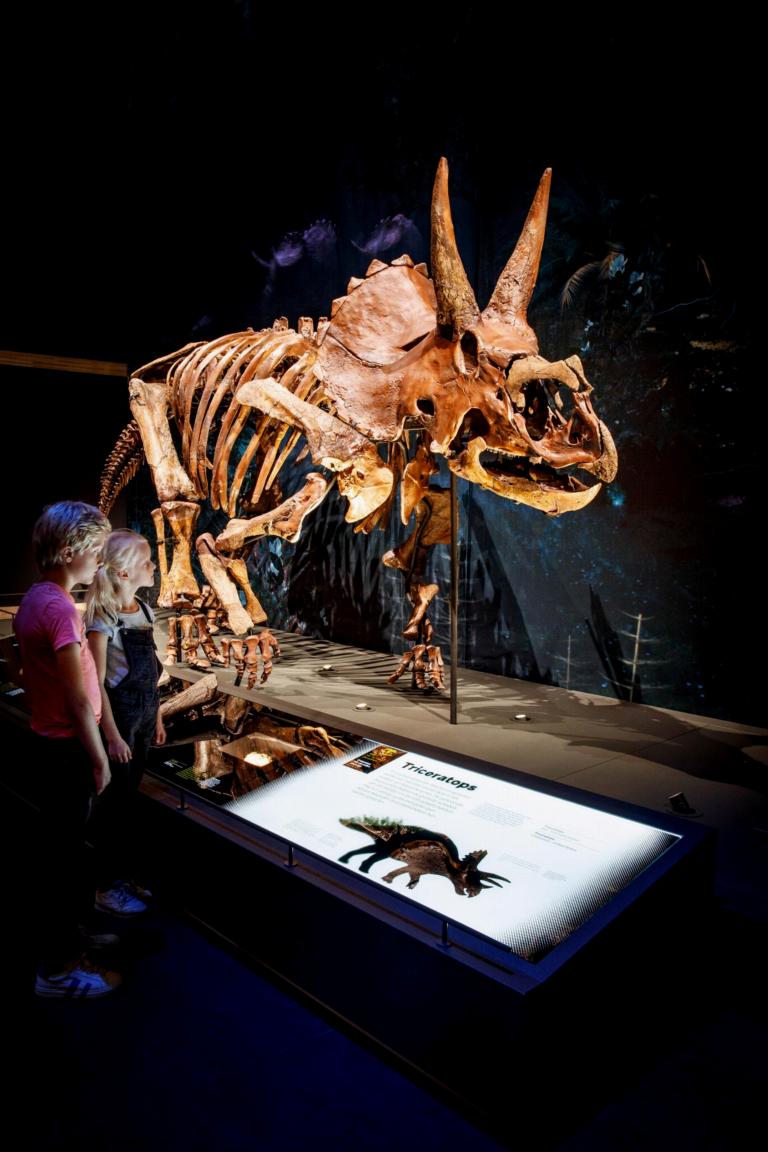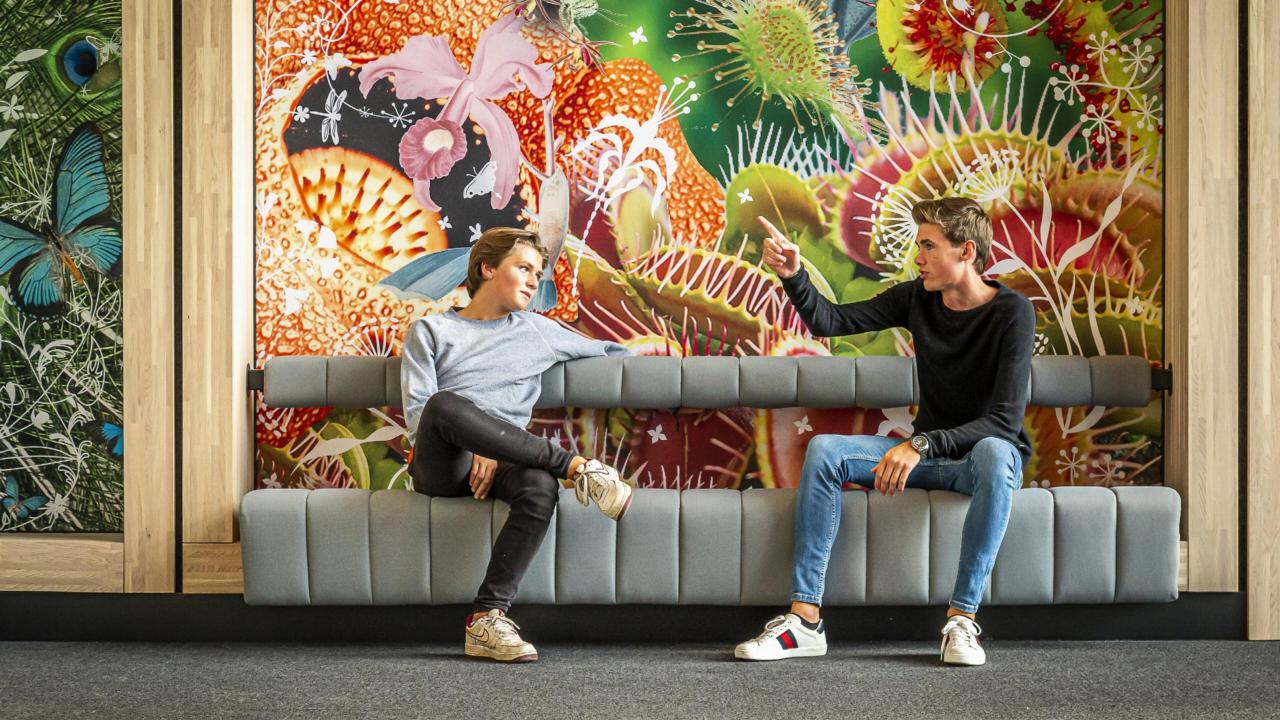
Dino's have gone extinct. How do we know how they lived and what they looked like? What they ate? Whare they lived and how big they were? Questions, questions and more questions. That is a good start for dino-research, In this exhibition program you wil compare fossils, objects and animals, work together and find out how dino's lived. Like real dino-scientist, you will discover what dino's looked like on the inside, what other animals have skeletons and what a fossil feels like.
Everything you need to knowin a row
- Type: exhibition program
- Level: groups 1 till 4 (4-8 years old)
- Length: 90 minuts
- Number of pupils: at least 15, but no more than 108
(At the 10 a.m. start time, there is room for a maximum of 144 students. Please inquire about availability) - Galleries in this program: Life, Dinosaur Era, The Ice Age and Triceratops: the herd
- The school supplies: one parent/supervisor for every five pupils
- Main objective: Get pupils in touch with and amazed about dinos. Pupils get curious and ask questions about dinos.
- Supplementary for group 3/4 (ages 6-8): By doing research, you will answer questions. A museum is a place where you can do research and meet scientists.
- Link to core objective: Pupils learn about the builds of plants, animals and humans and about the form and functions of their parts.
- Keywords: dinosaurs, bones, skeletons, fossils, inquiry-based learning, asking questions, comparing, amaze, enthuse.
Course of the programat the museum
In this program, the pupils will visit four exhibition galleries in Naturalis. The program consists of two parts: an introduction in the reception area and the dino-research through the museum. The schedule given below is an indication only.
0-20 minutes
Pupils and parents/supervisors start in the reception area with an interactive presentation by our educational assistant. Boer Boris (Farmer Boris) has found a dino skeleton in his field and goes to Naturalis to research dino's. While Boer Boris is the common thread in the intro for ages 4-6, the focus for ages 6-8 is on the research itself. Because how do researchers dig up dino bones? What did din's look like millions of years ago with flesh and skin? What colors did they have? Do we even know? Pupils learn that not every skeleton in the museum is from a dina and that a dino skeleton is similar to their own skeleton. We end with a study. A couple of pupils wil dig for actual dino fossilslike an egg, plant or turd. There is so much more to learn about dinos and other things in nature. The dino research continues in the museum and for this, every group gets a science bag with dino-stuff.
20-85 minutes
During the exhibition task, five pupils and a supervisor will study dinos. This can be done in the galleries LiveScience, Dinosaur and Triceratops: the herd. In gallery Ice Age and Evolution the pupils will study other animals and compare them to dinos. The parent/supervisor choose a couple of research tasks the pupils will perform and answer the questions. The parent/supervisor lets the pupils that can read, read the assignments out loud.
In gallery Dinosaurs the items can be removed from the bags. Together you will research what it is and to which dinos the objects belong. In gallery Ice Age, the pupils can study the fossils in the learning cabinet up close. An education assistant is there to help..
85-90 minutes
The group assembles at a location agreed on in advance, such as in the Atrium.
Practicalinformation
Information about practical matters such as parking, lockers and house rules can be found in our booking information.
